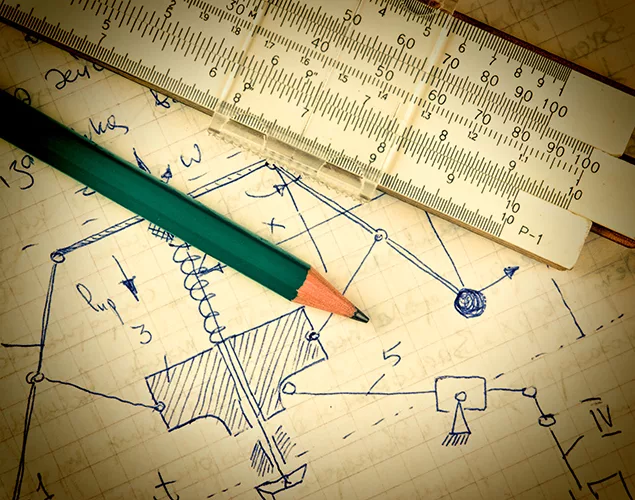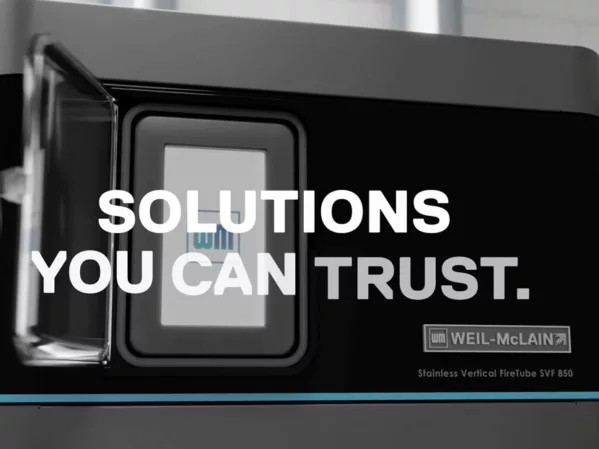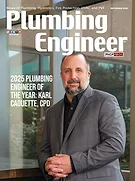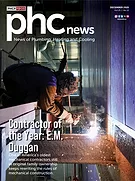What does a slide rule from the 1950s and artificial intelligence (AI) have in common? Jean-Baptiste Karr penned the title phrase in 1849, and although his writing was more about how human nature tends to stay the same even as society changes and morphs based on external influences, it is very applicable to today’s rapid technological change and advancement in engineering design.
Just as engineers in the 1950s relied on the slide rule to simplify complex calculations and improve efficiency, today we are exploring how AI can do the same, but with far greater scope. While the tools have evolved from manual to digital, the underlying goal remains unchanged: to empower engineers to solve intricate problems faster, more accurately and with greater creativity.
What was true in the 1950s is true now: introducing new tools continues to drive innovation, but the essence of engineering — solving problems and optimizing designs — stays the same.
Efficiency has always been the objective
My father was a mechanical engineer who started his career in technology (Digital Equipment Corp.) before moving to construction. He got into designing and building custom homes, so I grew up learning about engineering principles and structural mechanics such as load transfer and stress points, static and dynamic pressure and pipe sizing to manage flow rates and pressure loss.
At a young age I gained a deep respect for the principles that engineers needed to learn and apply to design buildings and systems that enable a building to work properly and last for a long time.
After I finished college, I started my career in commercial construction, working for a large general contractor (Ellis Don). However, my interests took me into software rather than engineering as innovation and business principles were where my passion emerged. I’ve spent more than two decades seeing technological advancements in software that have brought tremendous progress and efficiency to all business areas.
One of the lessons I learned is that technology will only be widely adopted if it truly solves a fundamental problem for people. Otherwise, why go through the pain of change? Newton’s first law sums this up perfectly, even though it’s not referring to software or technology. The law states that objects at rest tend to stay at rest unless an outside force acts upon them.
Change has to be compelling for someone to make an effort to alter their patterns and habits and make the “new thing” a part of their daily life. This connection between technology and problem-solving is something I’ve always appreciated. It’s not the outcome you’re changing but the process of reaching that outcome that needs to be compelling enough or solve a big enough problem for it to be valuable.
For example, when getting his engineering degree in the 1950s, my father’s professor taught the students how to do calculations manually so they understood how to get the answer, but he encouraged them to learn and use a slide rule to speed up the calculation process. At the time, the slide rule was a technological advancement more efficient than manual calculations. The students needed to know how to do the work, but what they used to get the outcome was flexible. Efficiency mattered.
This early lesson in balancing foundational knowledge with technological innovation has stayed with me throughout my career, shaping my approach to software and business.
Just as the slide rule simplified engineering calculations without replacing the need for understanding the principles behind them, today’s advancements in AI aim to assist in large volumes of product data knowledge, rapid summarization, logic-based decision-making and rapid scenario calculations without replacing the need to understand the principles of engineering and design.
AI is only a faster and more intuitive version of computer programming that has been around for 60-plus years. However, it can help engineers make better decisions with more insight across volumes of data never possible before and in a much more intuitive way, easily adopted (low learning curve) and efficient.
AI’s engineering help
I read a lot about AI and consult with companies on how and why to adopt AI that solves real problems and provides real efficiency. Here are a few ideas on how AI will be used to assist you in the future.
1. Design assistance
Today, you might be using templates or masters to create specifications but imagine a near future where you can use AI to review the design master to ensure it aligns with the owner’s objectives, building code and sustainability, making recommendations on changes to suit the parameters and layout you’re working with.
By understanding calculations and design principles, specifically in plumbing design, AI can analyze constraints such as flow rates, pressure loss and building codes, then propose the most efficient system configuration.
At our software company, we’re also developing AI that recommends product alternatives from various brands, allowing you to complete specifications faster with the confidence that all specified products are equivalent or equal. This spec assistance feature ensures your spec supports multimanufacturer bidding while maintaining performance and compliance.
2. BIM and smart modeling
Building information modeling (BIM) is vital to the design process. Still, one of its plumbing design shortcomings is the difficulty of obtaining accurate and up-to-date Revit files or families necessary to generate the final 3D model. Now, with AI, you have numerous options to generate 3D models, including AI-assisted tools that can generate 3D models directly from 2D plans or specifications.
AI can also analyze existing BIM models and automatically suggest or even create Revit families for plumbing systems, accelerating the design process and improving accuracy. Check out a comprehensive curated list of AI technology vendors for architecture, engineering and construction put together by a European engineer I follow at www.aecaihub.addpotion.com.
3. Code compliance and error detection
Code compliance and error management are some of the core tenets of an engineer’s responsibility, but as products become more connected to the internet through the Internet of Things, this effort becomes more challenging. This is exactly where AI shines as large language models (LLMs) have already ingested national, state and local building codes and can be prompted to help apply code rules if given the right project and product data needed to apply those rules.
Although this promises to be a highly valuable time-saving use-case, two key challenges AI is still unable to overcome with enough accuracy to be useful are understanding context and making multistep logic decisions.
For example, applying context-sensitive rules, such as building codes, often involves understanding the interplay of various conditions. LLMs can reference such rules but understanding how to apply them accurately in specific cases, especially when there are exceptions or nuanced factors, remains challenging. However, given time, there are no doubt a number of applications to provide this required logic and offer all the contextual and product details to take advantage of the AI’s capabilities.
4. Sizing calculations
Sizing calculations are crucial to ensure that plumbing and mechanical systems are designed to handle the specified loads. Fifty years ago, the company I work for began by printing sizing tables and including them in 4-inch-thick spec sheet binders that were delivered to engineers’ offices. These sizing tables quickly became one of the most relied-upon resources and, to this day, we still hear from engineers about how valuable they were throughout their careers.
While these paper-based tables have all moved online, AI now allows us to go beyond simple sizing. With AI, engineers can simulate various scenarios to analyze pressure loss, flow rates, and pipe sizes and even propose layout adjustments to optimize system performance. AI can also generate synthetic data for the modeling process, ensuring thorough limit testing.
5. Water conservation
With water conversation a hot topic, one of the recent advancements in plumbing product design is smart and connected products. When you specify a meter, a valve or a pump, why not look for a brand with a product connected to a monitoring mechanism? When you use connected plumbing and mechanical products, AI-powered predictive maintenance and leak detection can help with building safety and even reduce insurance costs.
AI can even help ensure compliance with water efficiency regulations, such as LEED or WaterSense, by automatically checking system designs against conservation standards.
As we look toward the future of AI in plumbing design and specification at our software company, we see an important change occurring. It’s clear that the role of AI in engineering is a transformative tool shaping how engineers design, build and optimize systems. Just as the slide rule revolutionized engineering in the 1950s by streamlining complex calculations, AI is now doing the same — but on a far broader scale.
By combining foundational engineering principles with AI’s power, we are enhancing efficiency and inventing innovation that will result in more efficiency and creativity. From design assistance to code compliance and even water conservation, AI is the next indispensable tool for engineers.
As technology evolves, one thing remains constant: the engineer’s mission to solve problems and build solutions that stand the test of time. The more things change, the more they stay the same.
Graham Walker is the vice president of sales and marketing at ATS Software. He is actively involved in AI strategy and product development specifically for the AEC industry.





